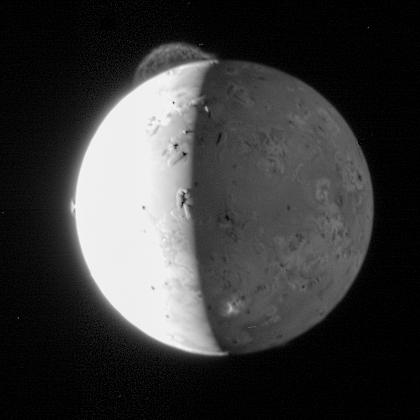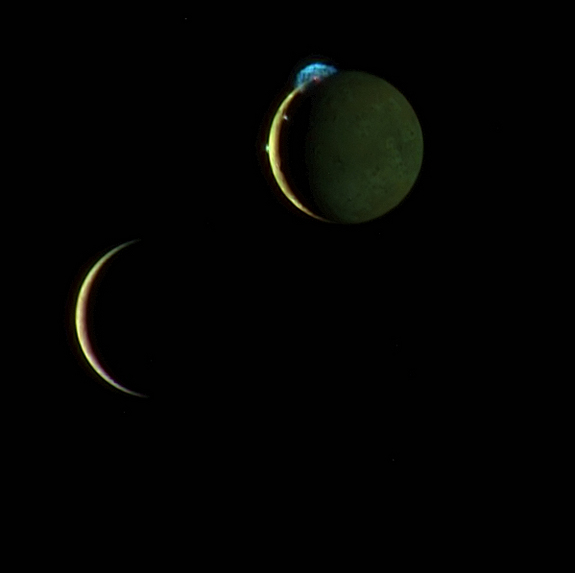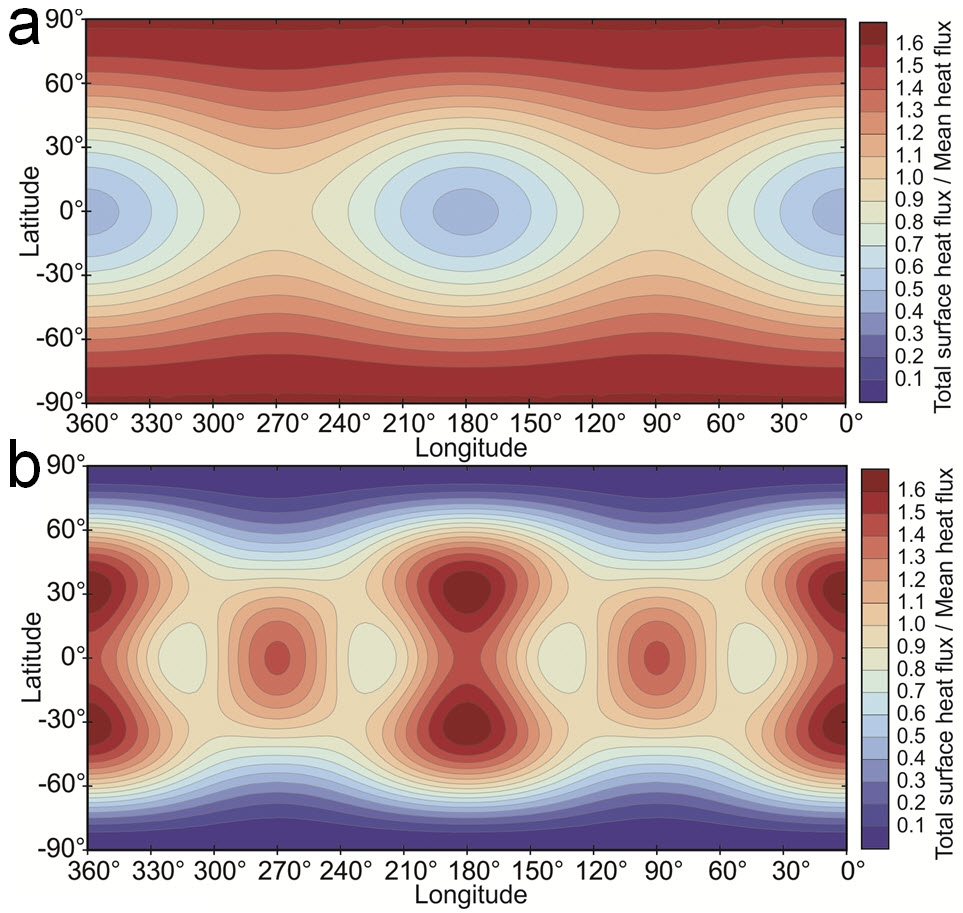
The hundreds of volcanoes on Jupiter's moon Io aren't where they're supposed to be, scientists say.
Io's major volcanic activity is concentrated 30 to 60 degrees farther east than models of its internal heat profile predict, a recent study reports, suggesting that the exotic, volcanic Jupiter moon Io is even more mysterious than researchers had previously thought.
"The unexpected eastward offset of the volcano locations is a clue that something is missing in our understanding of Io," study lead author Christopher Hamilton, of the University of Maryland, said in a statement. "In a way, that's our most important result. Our understanding of tidal heat production and its relationship to surface volcanism is incomplete."
Io is the most volcanic body in the solar system, boasting activity 25 times that of Earth. Some of Io's volcanoes blast plumes of sulfur and other material 250 miles (400 kilometers) above the moon, which is completely resurfaced every million years or so. On Thursday (April 4), NASA released a video of Io's volcano plumes based on five images snapped by the agency's Pluto-bound New Horizons spacecraft in March 2007. [Amazing Photos of Io by NASA Spacecraft]
This intense activity is ultimately generated by gravitational tugs from Jupiter, with an assist from the nearby moons Europa and Ganymede.

Io completes two orbits for every one that Europa makes, and four for every one of Ganymede's laps. As a result of this regular timing, Europa and Ganymede have pulled the orbit of Io into an oval, with explosive consequences for the 2,260-mile-wide (3,640 km) moon.
As Io moves closer to Jupiter, the planet's powerful gravity pulls hard on the moon, deforming it. This force decreases as Io retreats, and the moon bounces back. This cycle of flexing creates friction in Io's interior, which in turn generates enormous amounts of volcano-driving tidal heat.
Sign up for the Live Science daily newsletter now
Get the world’s most fascinating discoveries delivered straight to your inbox.
Common sense suggests that Io's volcanoes would be located above the spots with the most dramatic internal heating. But Hamilton and his colleagues found that the volcanoes are significantly farther to the east than expected.
They reached this surprising conclusion after studying data gathered by several ground-based telescopes and a number of spacecraft, including NASA's Voyager and Galileo probes, then comparing this information to a detailed geologic map of Io that scientists put together last year.
What's causing the disconnect between expected and observed volcano locations remains a mystery. It's possible that Io is rotating faster that scientists think, researchers said. Or models of Io's tidal heating may be missing some components, such as the complications caused by an underground magma ocean.
"Our analysis supports a global subsurface magma ocean scenario as one possible explanation for the offset between predicted and observed volcano locations on Io," Hamilton said. "However, Io's magma ocean would not be like the oceans on Earth. Instead of being a completely fluid layer, Io's magma ocean would probably be more like a sponge with at least 20 percent silicate melt within a matrix of slowly deformable rock."

Learning more about how Io's tidal heating works could shed light on the ability of other moons in the solar system to support life, researchers said. Tidal heating is thought to be the force making oceans of liquid water possible on frigid, ice-covered satellites, such as Europa and Saturn's moon Enceladus.
The study was publised in January in the journal Earth and Planetary Science Letters.
Follow Mike Wall on Twitter @michaeldwall. Follow us @Spacedotcom, Facebook or Google+. Originally published on SPACE.com.











